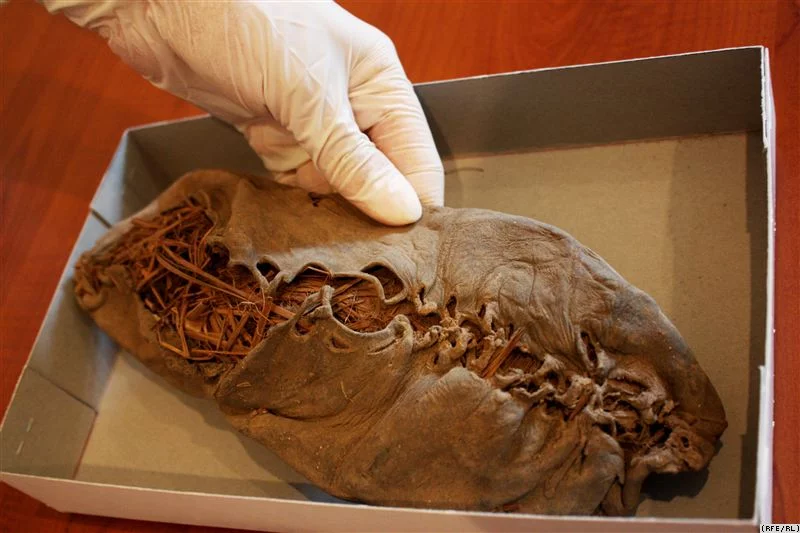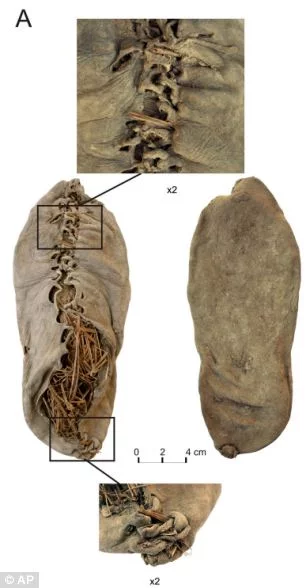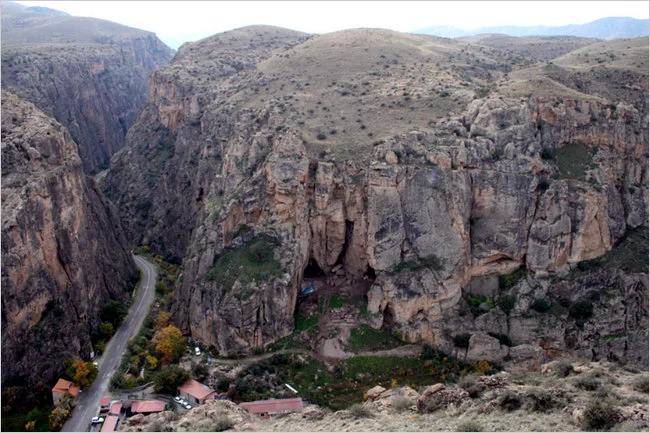 Archaeologists have found the oldest shoe in the world. The discovery came in a cave in the Vayotz Dzor region of Armenia, near the settlement of Areni which is known for its wine industry.
Archaeologists have found the oldest shoe in the world. The discovery came in a cave in the Vayotz Dzor region of Armenia, near the settlement of Areni which is known for its wine industry.
Perfectly preserved under layers of sheep dung, the shoe, made of cowhide and tanned with oil from a plant or vegetable, is about 5,500 years old, older than Stonehenge and the Egyptian pyramids, scientists say.
Along with the shoe, the cave has yielded  evidence of an ancient winemaking operation, and caches of what may be the oldest known intentionally dried fruits: apricots, grapes, prunes. The scientists, financed by the National Geographic Society and other institutions, also found skulls of three adolescents in ceramic vessels, suggesting ritualistic or religious practice; one skull even contained desiccated brain tissue older than the shoe, about 6,000 years old.
evidence of an ancient winemaking operation, and caches of what may be the oldest known intentionally dried fruits: apricots, grapes, prunes. The scientists, financed by the National Geographic Society and other institutions, also found skulls of three adolescents in ceramic vessels, suggesting ritualistic or religious practice; one skull even contained desiccated brain tissue older than the shoe, about 6,000 years old.
“Because the cave was also used by later civilizations, most recently by 14th-century Mongols, my assumption was the shoe would be 600 to 700 years old,” said Dr Gregory Areshian, co-director, Research Associate at the Cotsen Institute of Archaeology, University of California, U.S.
“When separate laboratories dated the leather to 3653 to 3627 B.C., he said, “we just couldn’t believe that a shoe could be so ancient.”
Previously, the oldest known leather shoe belonged to Otzi the Iceman, a mummy found 19 years ago in the Alps near the Italian-Austrian border. His shoes, about 300 years younger than the Armenian shoe, had bearskin soles, deerskin panels, tree-bark netting and grass socks. Footwear even older than the leather shoe includes examples found in Missouri and Oregon, made mostly from plant fibers.
“This is great luck,” said archaeologist Ron Pinhasi of University College Cork in Cork, Ireland, who led the research team.
“I was amazed to find that even the shoe-laces were preserved,” PhD student Diana Zardaryan said.
 “We have collected all sorts of grapes in Areni settlement to find out whether there any of them is identical to the grapes seed we found in the cave,” Director of the Institute of Archeology and Ethnography Pavel Avetisyan said. “The excavations are slow, as we are fearing to destroy the archaeological layers,” he added.
“We have collected all sorts of grapes in Areni settlement to find out whether there any of them is identical to the grapes seed we found in the cave,” Director of the Institute of Archeology and Ethnography Pavel Avetisyan said. “The excavations are slow, as we are fearing to destroy the archaeological layers,” he added.
